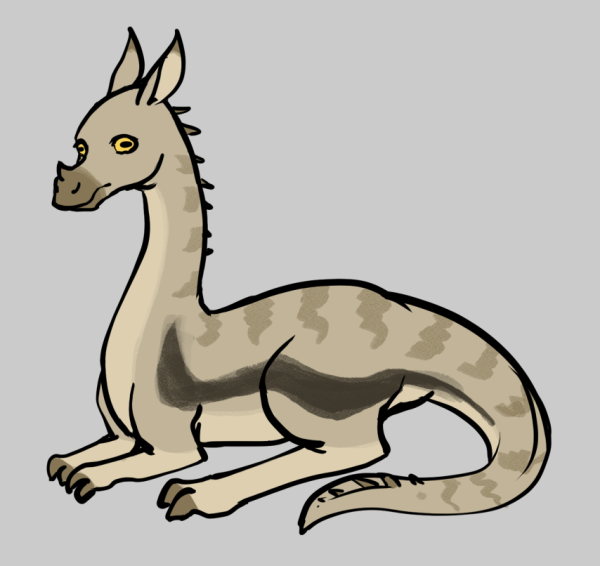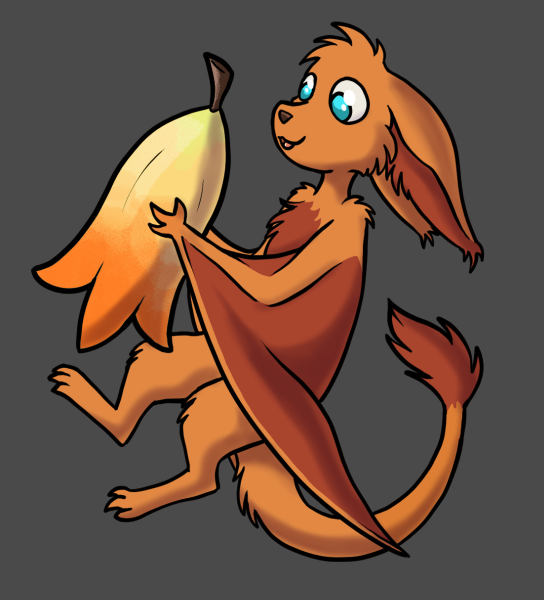
Flora and Fauna
There are many different species of plants, fungi, and animals on Alaruk, but this page will be covering just an important few.
Kariag
A large, herbivorous bipedal animal, kariags are found in grasslands and shrublands. They are diurnal and form large wandering herds. Their diet includes grasses, shrubs, leaves, shoots, and fruit.
Kariags are known to be a good source of meat and leather, and can be tamed as mounts by Rekrrasav and Hulesav clans.

A kariag lying down.
Kudak
Kudaks are small flying gregarious creatures, about the size of a rabbit. Covered in fur, they come in a variety of bright colors, usually two to three different colors. They have large eyes for seeing in low light, large ears for excellent hearing, and a long tail for balance in the treetops. Some may have tufts on the tips of their tails and on their ears. They have three digits on their hind legs, while fourth digit on their forearms is extended to form wings with a patagium that reaches their hips. Kudaks are oviparous and usually lay a clutch of two eggs once a year, right before the monsoon season begins. The eggs take about 24-26 days to hatch and nests may be located in large trees hollows or on cliffsides.
Being frugivores, their favorite food is nangangu fruit (a large fruit that looks somewhat cross between a banana and a mango). Kudaks are able to fly fairly well, and will travel from tree to tree in tropical areas to feed on fruit, living in large groups together. This makes them excellent seed dispersers for certain trees. During the dry season, they may eat seeds and nuts.
Kudaks have a proto-language, but cannot fully communicate with fuglans. They can be identified by the call "Koo-AHH!" Despite this, they can get along fairly well with nearby forest fuglan clans.
One of the kudaks' natural enemies is the known as the rak; a large predatory creature that prowls around on the forest floor. A kudak does not dare linger on the ground for long, lest they may be eaten by a rak.

A kudak with a nangangu fruit.
Rak
Raks are vicious carnivorous creatures that prowl the grasslands and forests of Alaruk. Swift runners and trackers, they are capable of stubbornly pursuing their prey for miles, joining groups to take down larger prey such as kariags. These packs, lead by a dominant rak, tend to gather and disperse freely, only shrinking in size once a meal has been caught and eaten. Raks congregating in a large group is a good indication that they're hungry and looking for something to devour.
Raks are difficult to domesticate, but fuglans have been known to tame solitary raks to use for hunting and tracking.

A vicious rak.
Back to Home
© Asuune 2023-2024